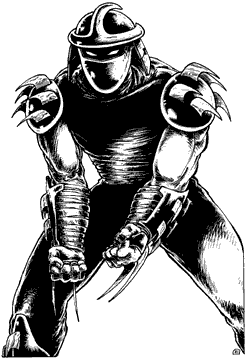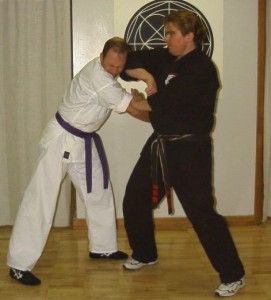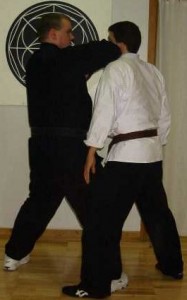There will not be a Fight Endurance class next Tuesday, 1/29. The class will resume Tuesday, February 5.
Archives for 2013
Krav Maga Scenarios 01.26.13
Krav Maga Does Not Make You Invincible
Thanks to Steff for passing this along. Read this article from Krav Chicks; it’s really important.
Krav Maga Does Not Make You Invincible (How I Nearly Got Myself Killed)
Weaponizing the Body
First, I don’t mean “weaponizing the body” like Richard Reid did with his shoes or Umar Farouk Abdulmutallab with his underwear (or dozens of other terrorists with their suicide vests). We’ll leave the incendiary devices to those disposed to use them. Our weapons are more precise, more reliable, and designed to cause only temporary discomfort to those sorely in need of it.
I refer of course to our palms, fingers, knuckles, fists, and elbows.
Long time students of Kenpo and Krav Maga grow more alike than you might think. Over time, the Kenpo student learns (or should learn) to be more spontaneous and less cerebral, to respond to an attack as immediately and instinctively as the Krav student is taught to do on day one.
But if the Kenpo student can learn from Krav’s methods of harnessing instinct, so can the Krav student learn from Kenpo’s thoughtful matching of bodily weapons with bodily targets. And it’s not that hard: the “weapons” I listed above are the “unconventional” strikes Kenpo teaches to students for their first test for yellow belt—baby steps, in other words.
Take the palm heel strike:

Close, Captain. But your angle’s a bit off:

Much better, but then she looks part Klingon. They know how to fight.
Why the palm over the fist? While I might take the fist over the nose in a match-up, I like the fist’s chances significantly less against a hard target like the forehead. As has been known to happen, knuckles can break. Note also that if the base of the palm strikes the chin, the fingertips can often reach the eyes—an added bonus. (Try it on yourself to see.)
Whether by straight pokes or slashes across the face, the fingertips can be incredibly destructive to a soft target like the eyes. (I said Kenpo was thoughtful; I didn’t say what it thought about.)
What about the knuckles—or at least one knuckle?
That’s gotta hurt, you have to admit. And all the striker has done is extend his middle knuckle out slightly from his clenched fist. The thumb supports the extended knuckle, making it a solid wedge, a serious weapon. If striking an opponent’s temple seems excessive, imagine using it instead on the solar plexus (after defending a choke from the front, say). It’s an insertion weapon, which would knock the air out of the attacker and likely double him over. Then knees or hammer fists to taste.
Moving on to elbows. Kenpo teaches fluidity of motion. Ideally, the strikes never stop; they just loop back from different angles to different targets. We’ve all practiced throwing a right elbow strike to a focus mitt (sometimes from out of range, using a burst with our feet). But as powerful a strike as that is, why should hostilities end there? A forward elbow, with follow through, sets up perfectly for a back elbow. Maybe even a back fist thrown in for good measure. If it sounds confusing, ask any Kenpo student how Triggered Salute goes; it’s one of the first self-defense techniques we teach. The strikes go: inside (or forward) elbow; outside (or back) elbow; back fist; upper cut. All with the right arm, all to the rib cage or face of the opponent, depending on relative height.
But of all the basic strikes we learn to throw in beginner Kenpo, the most destructive strike of all is the so-called sandwiching elbow.
You throw your right elbow as practiced before, but while bracing your opponent’s head with your left hand (as nearly done above). The combination is unimaginably violent. Or so I’m inclined to believe, never having fully connected with it—or had it connected on me—in practice. Obviously, however, no opponent would willingly allow you to apply it without putting up some kind of fight, which is why it tends to show up late or even last in our self-defense techniques. When the defenses have been softened, when threat of a counterattack has been lessened, we move in for the metaphorical kill with the sandwiching elbow.
Just be careful how and where you practice it:
Krav Maga’s greatest lesson is explosiveness. These additional weapons should never detract from that, and if you’re new to Krav, develop that skill first. But Kenpo has already thought through many of the same scenarios we encounter in Krav, and devised a counterattack for it. A few of those counterattacks are easy to throw and highly effective. If you’re curious, black belts like Brian, Matt, Julian, or I (even our newest yellow belt Marc!) can show you some of them in context.





